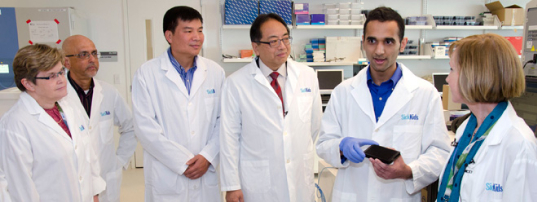Study Shows Clinical, Physiological & Radiological Assessments Often Do Not Match Up in CF Diagnosis

Peter Barry from the Manchester Adult Cystic Fibrosis Centre at the University Hospital of South Manchester and Alex Horsley from the Institute of Inflammation and Repair, Education and Research Centre at the University of Manchester recently reported the case of a 20-year-old man with CF. The report, entitled “Discordance between clinical, physiological, and radiological measures in cystic fibrosis” and recently published the journal Respiratory Case Reports, details how clinical, physiological and radiological assessments are often discordant in the diagnosis of cystic fibrosis.
The CF patient was homozygous for the F508del mutation and CF was characterized by pancreatic insufficiency, CF-related diabetes, and colonization with Mycobacterium abscessus for 3 years. Furthermore, the patient had mild lung disease as assessed by forced expiratory volume in 1 s (FEV1) of 86% predicted.
For a period of 12 months, the patient was assessed with spirometry for the severity of respiratory impairment, and the clinicians observed some disparities in the results. The patient transitioned to adult services on supplemental nocturnal oxygen after identification of nocturnal hypoxia in paediatrics; the patient had moderate to severe bronchiectatic changes (chest X-ray) and required four courses of intravenous antibiotics for pulmonary exacerbations over the course of the first year in adult services, without the identification of any new pathogens.
[adrotate group=”1″]
Lung function as assessed with FEV, revealed good forced vital capacity and well preserved FEV. However, the flow volume loop revealed marked scalloping of the expiratory limb. Gas diffusion coefficient was normal but a discrepancy was noted in total lung capacity and functional residual capacity when comparing plethysmography to dilutional methods. Good nocturnal oxygenation was noted. Inspiratory and expiratory muscle pressures were also normal and supplemental oxygen was discontinued. The patient’s echocardiogram was normal and formal exercise testing revealed the patient to have depressed maximal oxygen consumption, and marked exercise-induced oxygen desaturation was observed. However, the work rate was good.
Based on the reported assessment approach, the UK clinicians point out that there are discordant assessment measures in this case scenario. In this specific case, many lung function assessment methods were used to diagnose CF. With regards to the methods used to evaluate patients, in the report, Peter Barry and Alex Horsley still note that while spirometry may not capture clinically and radiologically apparent respiratory changes, it continues to be the gold standard method for short-term change, response to intervention, and prognosis in patients with CF. The authors conclude by stating that chest computed tomography may be more feasible than spirometry in gathering detailed lung information in patients with suspected CF, and indicate the need for longitudinal studies in patients with discordant severe radiological changes.








